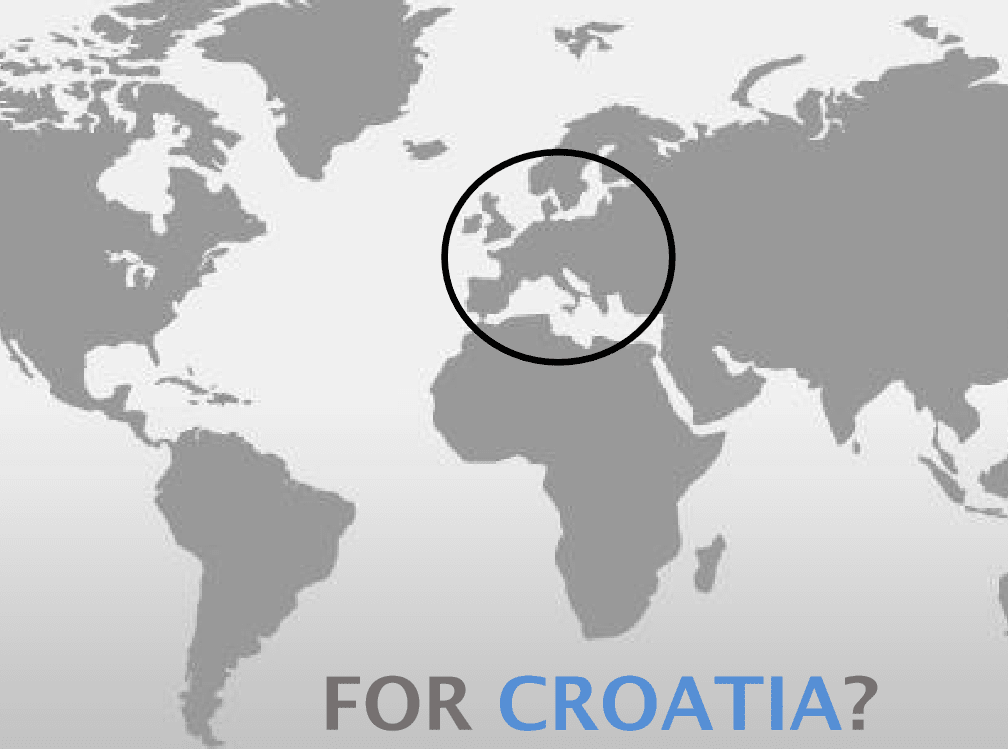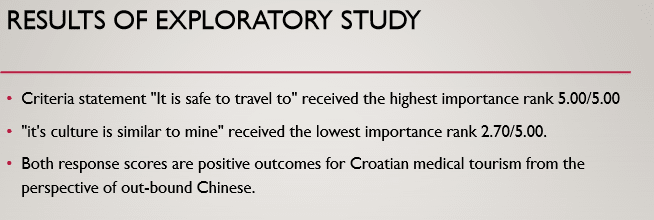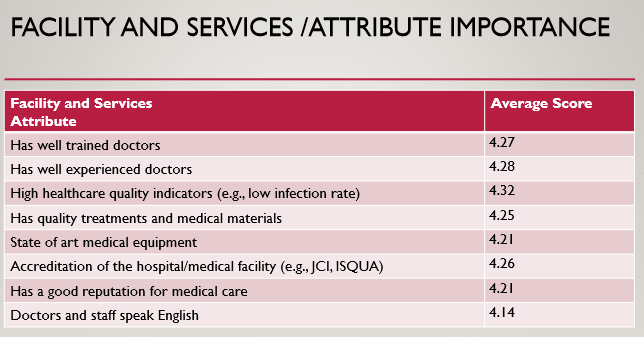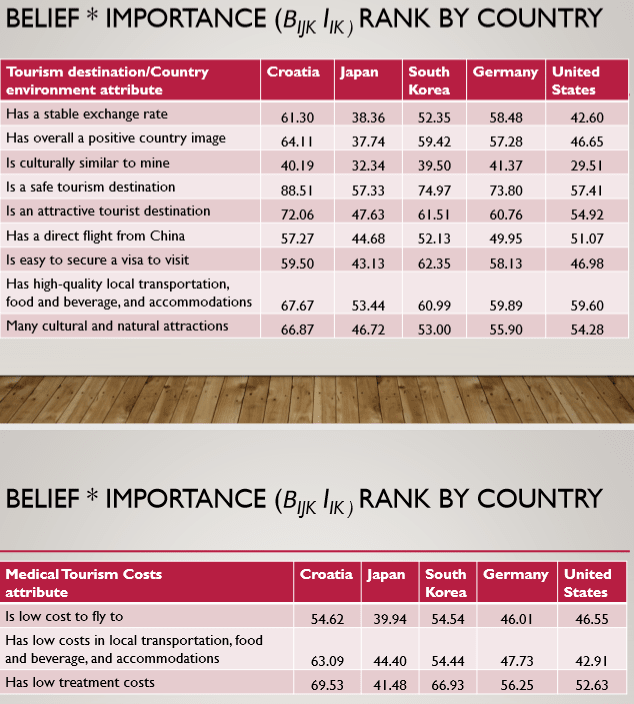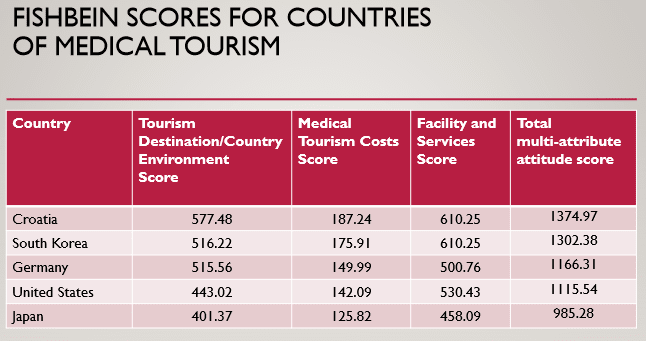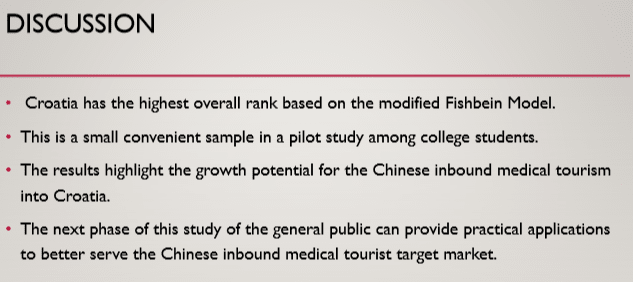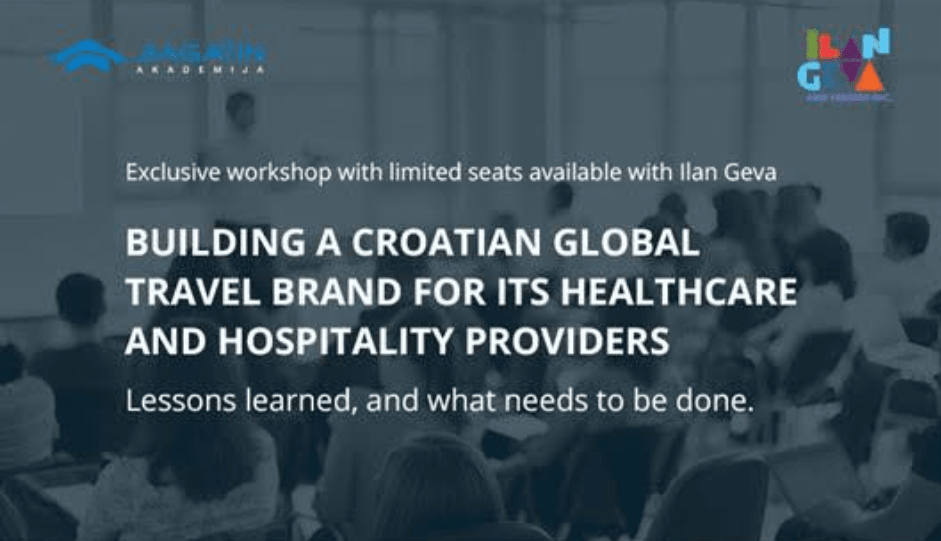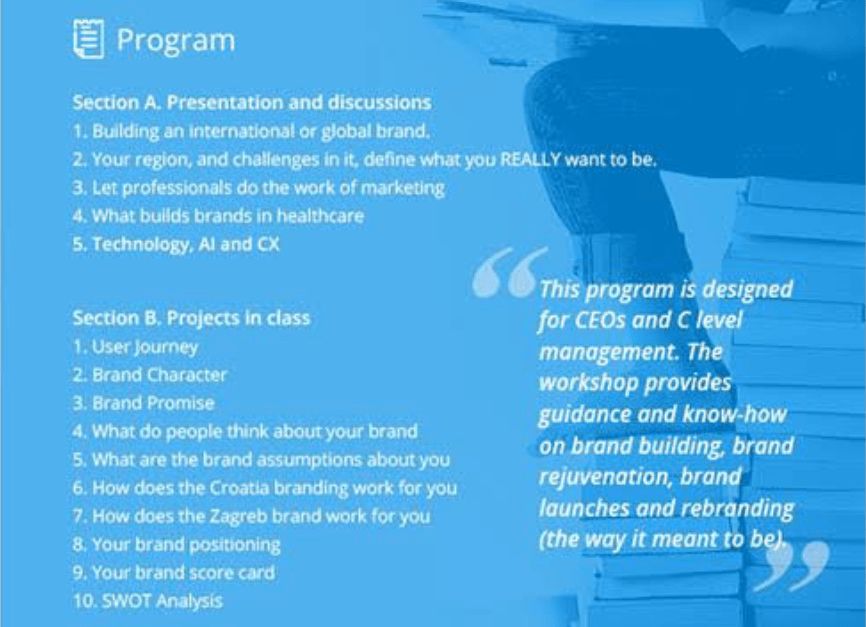Investment in Croatia: 150 Million Kuna for Primorje-Gorski Kotar County
Whether it be big or small, investment in Croatia with the help of European Union funds continues to keep the country's offer competitive.
As Morski writes on the 17th of November, 2018, in one port area in Primorje-Gorski Kotar County, the biggest investment cycle so far has begun. Of the massive 150 million kuna investment, as much as 60 million kuna are the projects of the County Port Authority of Crikvenica, and works in Jadranovo, Crikvenica and Selce will begin next week, according to HRT Radio Rijeka.
The project's contractors are Crikvenica Construction and Rijeka BSK Commerce. The completion of the port extension has been announced in Crikvenica for eighteen months time, that in Selce will be done in five years, and in Jadranovo, the expected time limit is one year, with the overall desire for it to be completed before next summer.
Speaking generally, investment in Croatia is a hugely important step in continually improving the country's already rich offer, and Primorje-Gorski Kotar County has not launched such a large investment cycle in its coastal area ever, County Prefect Zlatko Komadin said. This year, 40 million kuna's worth of works began, while the rest of the investment cycle is expected to reach 150 million kuna in the next two years. Along the coast in the Crikvenica area, there also will be works on the ports of Unije, Susak, and Cres. The views of places and cities are changing, which is already evident in Njivice (Krk) and in Novi Vinodolski, and such changes will soon also be seen in Crikvenica, noted the prefect. Komadina also pointed out that they have withdrawn most possible European Union incentives for the upcoming works.
Nada Milošević stressed that as much as 101 million kuna is coming from EU funds. "The Ministry's contingency has been extended until February the 29th next year, so we're planning to run two more projects in addition to the Crikvenica project, involving Rab and Purpurela ports, part of the fishing port and the extension of the Baška port," said Milošević.
The director of ŽLU Crikvenica, Mario Kružić, announced that in Crikvenica, the existing pier will be extended by another sixty metres, and a new western breakwater of 130 metres in length will be built to protect the port from waves. Two existing gates will be built in Selce on Polača and Stari mul, which will be 100 metres longer. In Jadranovo, the plans are the construction of a new promenade of about 400 metres in length, and in Perčin port, the communal berths will be renovated, and in the concessioned area, nautical berths will be constructed. The plan also boasts an 80-metre deep breakwater pontoon, as well as the construction of two piers at lengths of sixty metres.
Work should begin next week, and Crikvenica's administration has asked tourists and citizens alike for their patience, as heavy machinery will be moving through the city streets.
Want to keep up with more news on investment in Croatia, EU funds and other big projects? Make sure to follow our business page for much more.
Click here for the original article by Neva Funcic for HRT Radio Rijeka
Croatian Medical Tourism: Great Potential, Collaborate or Die Says Ilan Geva
November 14, 2018 - Another busy week for the emerging Croatian medical tourism industry. Branding guru Ilan Geva gives his thoughts after his latest visit to Croatia.
It has been quite a week for the Croatian medical tourism industry. Keith Pollard, Editor in Chief of the International Medical Travel Journal, in an interview with TCN, talked about the Croatian potential, as well as assessing that the country could take 25% of the Hungarian dental market 'if Croatia got its act together'; Sherene Azli, CEO of the Malaysia Healthcare Travel Council, which runs the best medical tourism in the world in Malaysia, was in town to explain how Malaysia does it; and global branding guru Ilan Geva was in Croatia for a week, both as a speaker at CIHT 2018, having already performed a special workshop for industry professionals on branding Croatian health tourism in Zagreb. TCN caught up with Ilan after a busy week.
1. You have just spent a week in Croatia, your latest visit since your first 10 years ago, and you held a specialized branding workshop with industry leaders, as well as performing as a keynote speaker at the 6th Crikvenica International Health Tourism conference organized by the Kvarner health cluster. How was your week, and what did you learn?
Every visit to Croatia is a good one for me. I simply like to come here, and get involved in knowing the healthcare providers, visit the hospitals and clinics, and mingle with the movers and shakers of the industry. I always see another angle in my visits, sometimes I focus on one single client, and sometimes I have the time to spend on my own and observe. This last week was indeed intense, since 4 out of 6 days on the ground I was presenting to audiences and following up with conversations.
It is clear to me that the Croatian medical tourism industry is now on a crucial crossroads. There is lots of work to be done. I learned that not everyone agrees on what to do and how to do it. And I came to a very simple conclusion, Croatians must build a national brand for the emerging medical tourism industry.
They must decide which government office supports the effort (only one!) and they must have a sense of urgency, there is no time to waste, the competitors are not waiting.
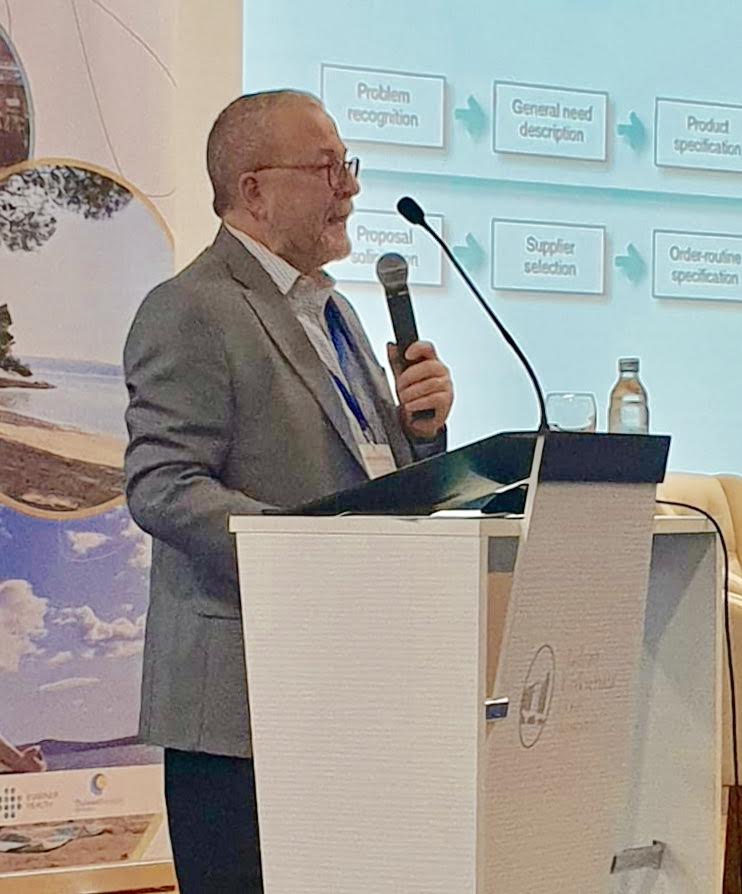
2. You first came to Croatia back in 2008 to help a dentist in Rovinj. Tell us about that, and how the Croatian medical tourism story has progressed since then?
Back in 2008 the entire concept of medical tourism was in its infancy, as far as organized business category. Many providers felt that it is enough to just have a nice clinic and people will show up. There was absolutely no data, information, or anyone to learn from. The wonderful doctor in Rovinj was indeed a very competent doctor, and has presented new treatments in stem cell therapy, but he was a bit naïve. He believed that if he will give me a budget of $400 a month, I would be able to send him 200 patients a year from the U.S.Mathematically this is so improbable, that I saw no point in continuing the conversation. He basically offered me $24 per patient delivered!
And I am not even a facilitator, I am a brand builder and a marketing professional. The situation now is a bit different, but one of the most common sentences I hear in Croatia (as well as in other Eastern European countries) is the sentence: “We have no budget”. That has to change immediately. No one gains anything with no investment. I heard that there is actually money being spent already, the question is who spends it, on what, is it transparent, and does it deliver a clear benefit to all Croatian medical tourism practitioners. Some people complained that the Zagreb Tourist Board has commissioned an American association to do a research, or feasibility study well over a year ago paid a six-figure amount (in U.S. Dollars) and yet no one has seen anything. That doesn’t contribute to the effort of building a consensus and collaboration in this industry.
On the other hand, the overall situation progressed a lot because these days there are extremely successful hospitals and clinics in Croatia, and the awareness is starting to build up, mostly by word of mouth.
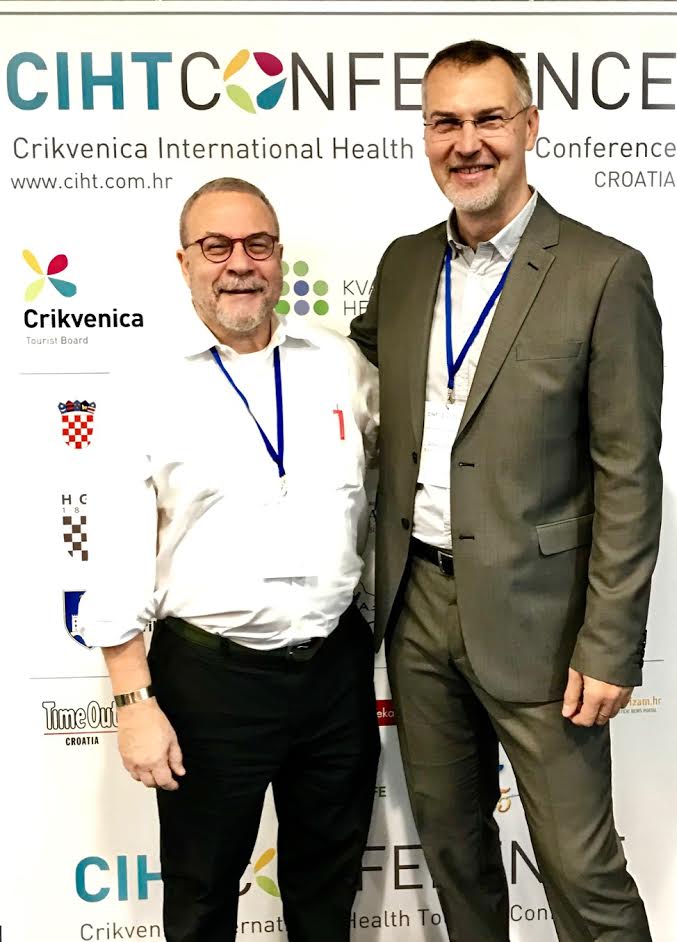
3. One of the key messages of your workshop was the need for all the stakeholders to come together, in a way that Malaysia has managed so well. Give us your vision of the stakeholders involved in getting the momentum behind the promotion of Croatia as a medical tourism destination.
The main lesson I learned from my travels and visits to medical tourism destinations and hospital inspections: Collaborate or die. Malaysia was no different from Croatia, they had to face the decision of being serious about the business, or just being a bunch of hospitals competing with each other. A bunch of hospitals competing with each other doesn’t help any country in creating a solid brand for its medical tourism industry.
Thailand, The Philippines, Israel, Greece and others have some few excellent hospitals. But in fights, inaction, political battles and “lack of budget” kill the opportunity to become a global brand in medical tourism.
Malaysia overcame the obstacle of politics, budget allocation, and legal implementation and made sure that all stakeholders know exactly what they are supposed to do within the medical tourism activity. Clear, transparent and efficient. Croatia is still miles away from that situation. Building a national brand is impossible under these circumstances, because there is no brand…only a bunch of providers spread all over the country.
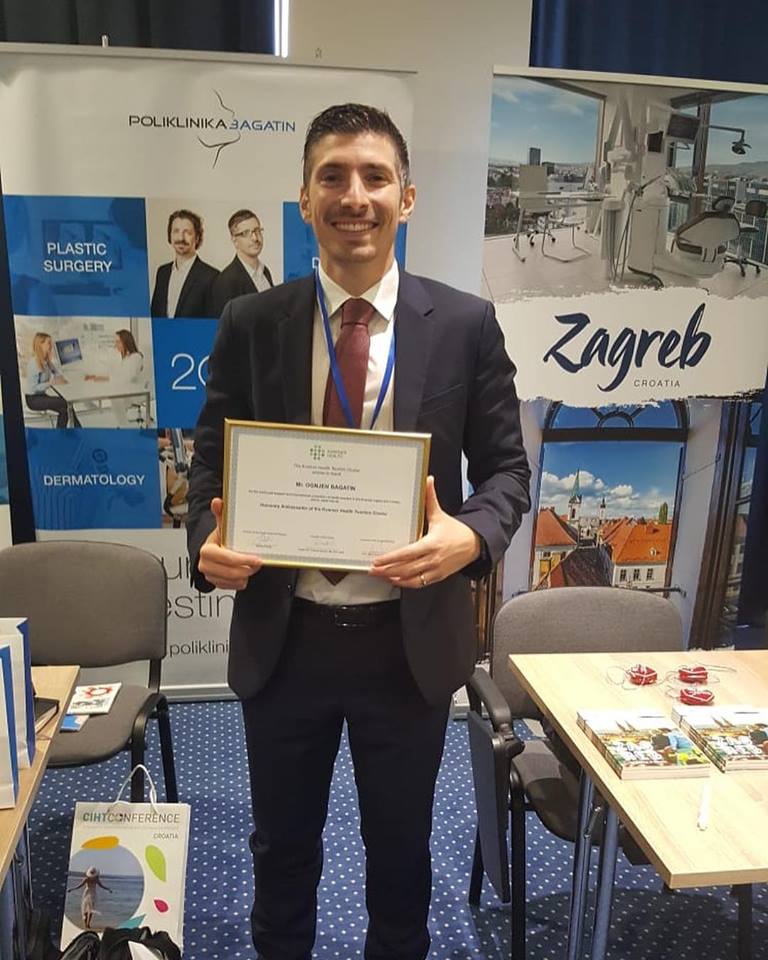
(Ognjen Bagatin of Bagatin Clinic, one of four Croatian clinics Ilan Geva singles out for Croatian medical tourism)
4. You travel the medical tourism globe, and have done for many years. Many Croatians will be surprised to hear that its medical tourism industry has such potential. Paint a picture of that potential, who are the key players in it, and where does Croatian medical tourism stand now, and where could it be in 10 years?
I will name only four businesses that are in the “Premier League” of medical tourism in Croatia: St. Catherine Specialty Hospital, Poliklinika Bagatin, Terme Selce and Svjetlost Clinics. They are each specialists in a separate area, and they are all extremely successful at what they do. They are also aware of the power of brand building, marketing excellence and delivering superb customer satisfaction. There are many other great clinics spread around the country, primarily in tourist destinations, such as Istria, Dubrovnik, Split etc. but they do not have the mass needed to build a global clientele.
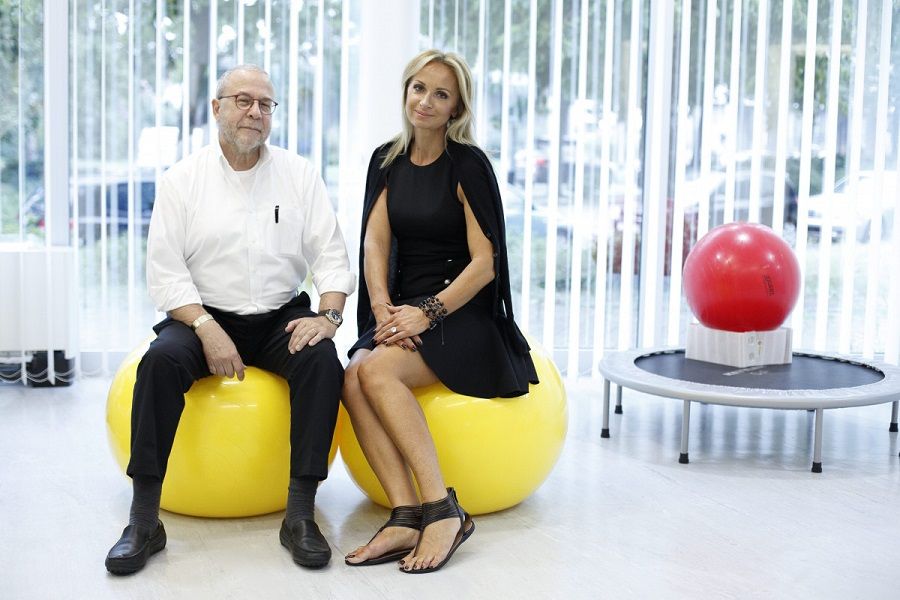
(Ilan Geva with Jadranka Primorac from St Catherine Specialty Hospital)
5. One of the things I learned this week is that the brand of the Kvarner health cluster seems to be stronger than that of Croatia in the industry. What are your thoughts on that?
What I love about the Kvarner Health Cluster is the fact that they are all about initiative. They are a good example of an organization that is trying to do the best for all its constituencies, and lift them all to a higher level. I personally don’t know if the Kvarner brand is more prominent than any other brand in medical tourism, but I also know that Croatia has no national brand in medical tourism…Simple. Croatia has a very strong brand and brand awareness in sports, but not in any medical institution, medical university, research facility or breakthrough innovation. Some of the brands I mentioned above have parts of this reputation, but not the country as a unique entity.
If you ask today anybody in any European location “What is Croatia know for”, I am willing to bet that no one will say “Excellent medical treatments”.
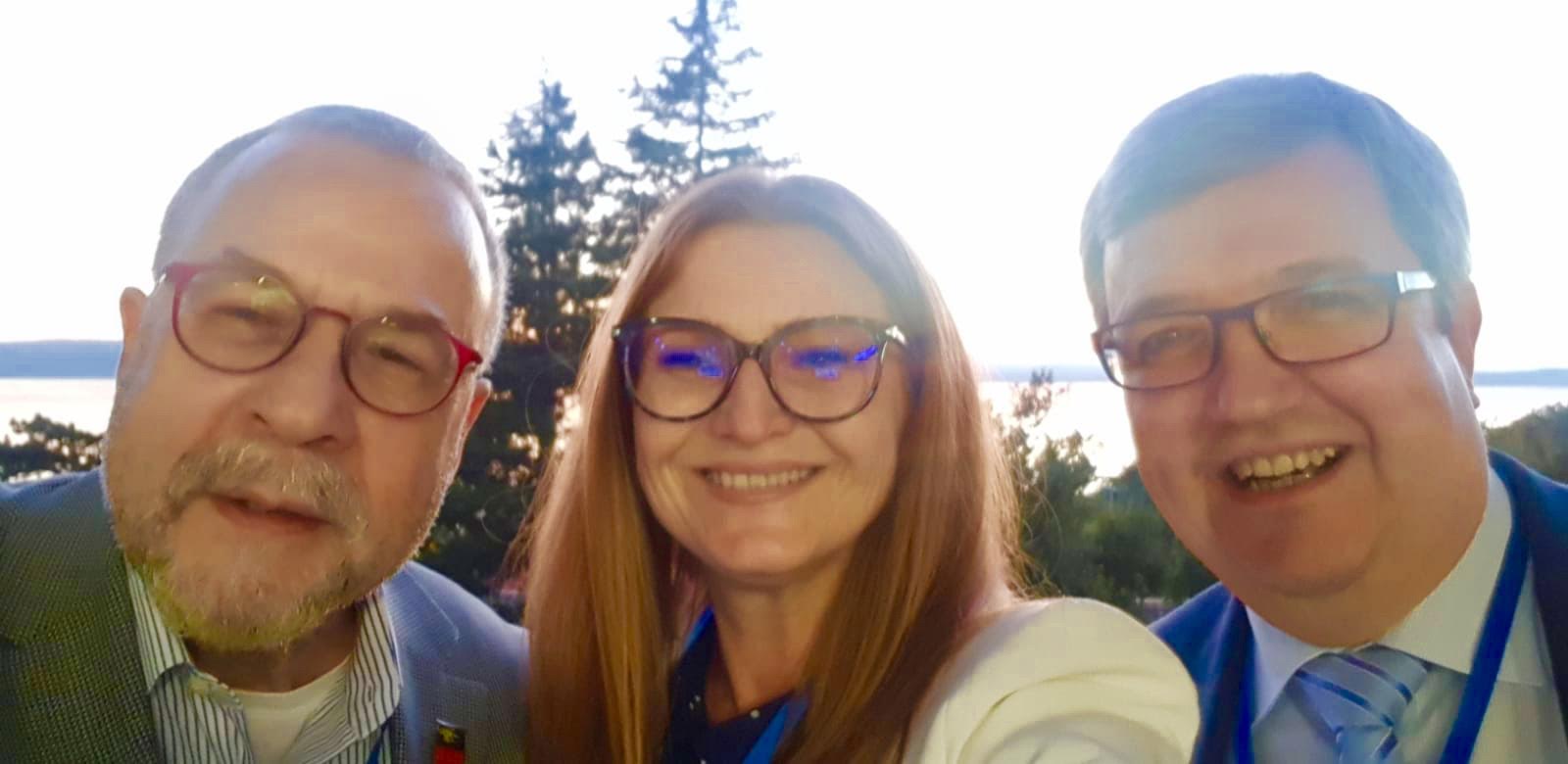
6. Which markets do you think the Croatian medical tourism industry should target, and why?
Draw a circle around Zagreb, which represents up to 5 hours flight, and that circle may include the potential market for Croatia’s medical tourism market. Anything else will be a surprise for me.
7. As a frequent visitor to Croatia with an interest in health tourism, give us a paragraph on the potential healthcare and tourism experience which awaits patients.
This is a very broad question. But I will try to answer it via some examples. First, Croatia does have a brand in the tourism industry. The visitors to Croatia know that they can expect a beautiful clean and pristine country, with amazing sights, fantastic food, and very nice people. That is hospitality, and Croatians are known to be wonderful hosts. But even in this category, there are already voices that warn people not to show up in Dubrovnik at the height of the season, because the place is too small to contain all the visitors, and the level of service is deteriorating…Some of the great generosity and professionalism Croatians display in tourism is also evident in medical treatments. But the country does not have certain standards that will welcome patients in every location across the country. The customer experience might vary, and that is a danger when going forward.
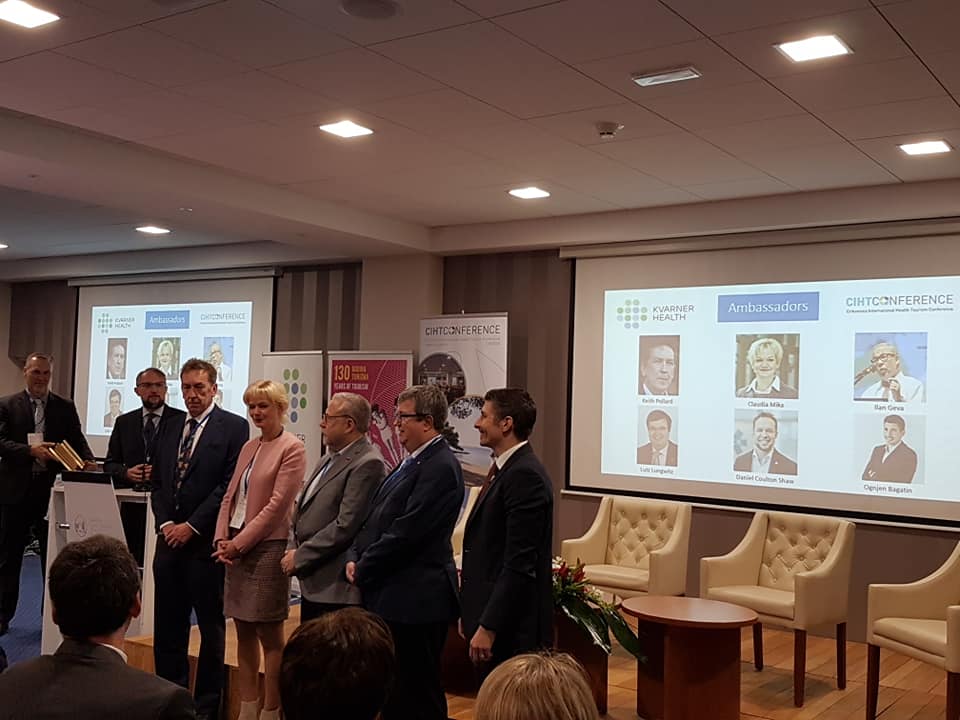
(Ilan Geva was among the nominated ambassadors by the Kvarner Health Cluster in Crikvenica at CIHT 2018)
8. You were given a special recognition in Crikvenica at CIHT 2018, as one of the conference ambassadors, and you were given an extra gift at the end - a Luka Modric shirt. Tell us about that and the hospitality you received in Crikvenica, where you were clearly very at home.
The truth is that I was booked at another conference in Korea at the same time the CIHT conference took place. Suddenly, that conference was cancelled, and I was joking with Vladimir that I will come only if he will give me a Luka Modric official team shirt…Little did I know that he would take it seriously. I am actually glad he did! I was betting with all my friends in Chicago that Croatia will make it all the way to the finals, and they all laughed at me…they simply don’t know the grit of the Croatian people. If Croatians will demonstrate the same team spirit and determination in Medical Tourism, as they did in the World Cup, nothing will stop them!
My last visit to Crikvenica was the fourth one, and I enjoyed all of them, even in the winter. I know from personal experience that the people are extremely generous, professional and very welcoming. I also know from personal experience that as medical professionals they are good, very good.
Now what we have to do is make them famous around the world, and position them as the right people in the right place.
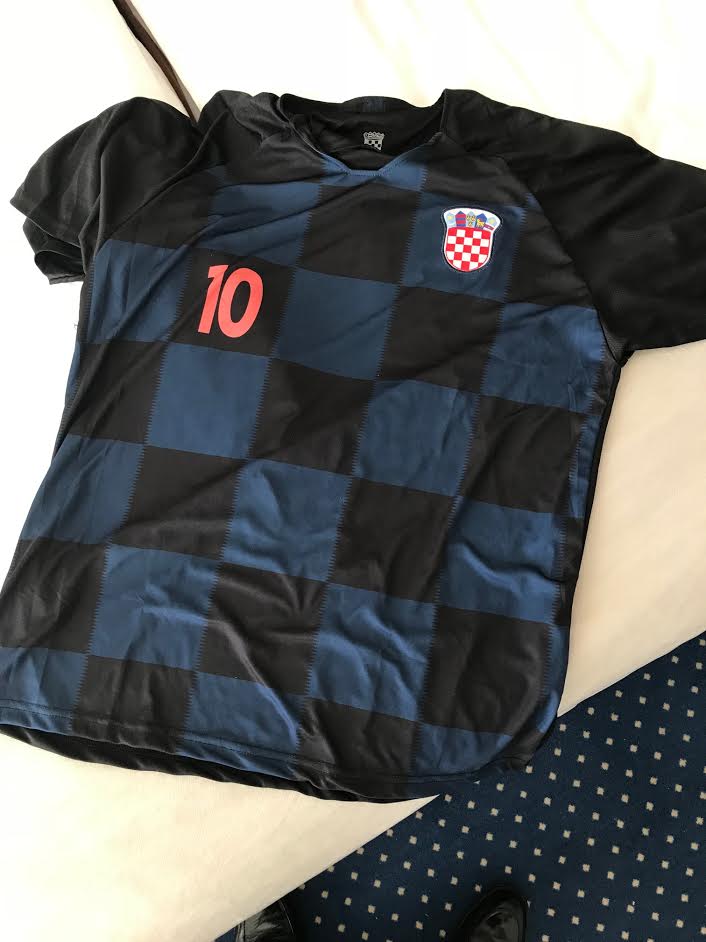
(The Luka Modric shirt...)
To learn more about Ilan Geva, check out his official website.
To follow the latest from the Croatian medical tourism story, click here.
Croatian Health Tourism: Interview with IMTJ Editor Keith Pollard in Crikvenica
November 10, 2018 - TCN meets Keith Pollard, Editor in Chief of International Medical Travel Journal on the potential for Croatian health tourism at CIHT 2018 in Crikvenica.
Among the many high-quality Croatian and international expert speakers at this year's Crikvenica International Health Tourism conference was Keith Pollard, Editor in Chief of the most influential media in the health tourism industry, the International Medical Travel Journal (IMTJ). TCN caught up with Keith to talk a little about Croatian health tourism potential after his thought-provoking presentation at the conference - Developing a Medical Travel Strategy for a Hospital or Clinic.
Give us a little advice on Croatian health tourism. Who do we look to for best practices, and where can Croatia realistically compete on the market?
Let me start by saying that there is massive hype around this sector. Massive. Everyone thinks they can do medical tourism, but if you are looking for one place to learn from, study Malaysia.
Malaysia without a doubt is the country which has got it together. We have the IMTJ awards and Malaysia has won Destination of the Year three out of four times. They have managed, somehow, perhaps because of the culture, to get all the bodies and stakeholders together. I have been there and been through the process, and it is real.
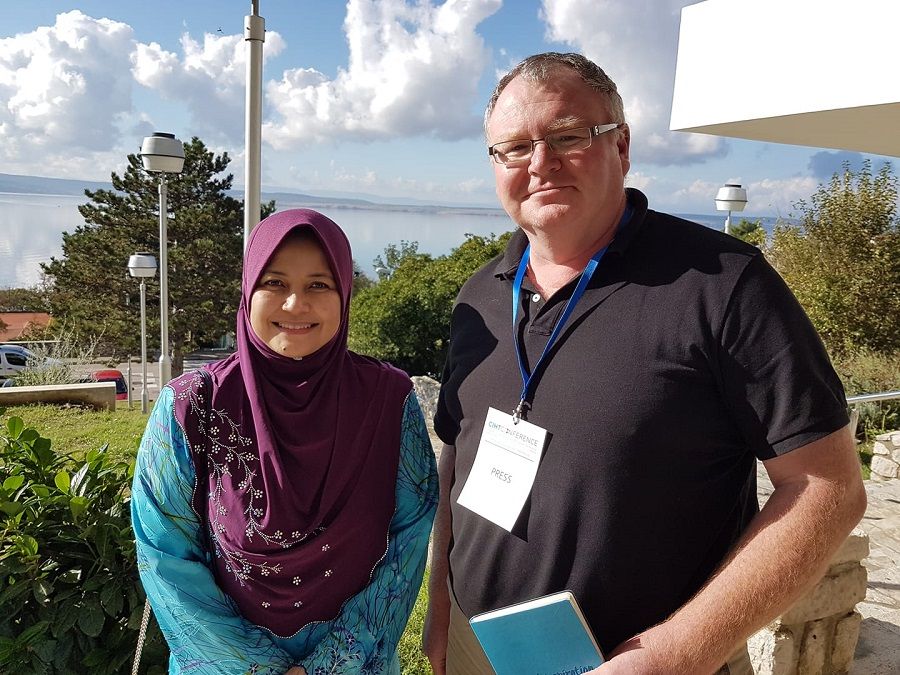
You come off the plane, and the lady is waiting with your name to greet you. Sherene (Azli, CEO of Malaysia Healthcare Travel Council, above, also a speaker at the conference) has I think 35 staff, and they have put a real investment into the process. And you can see it is working. The other thing Malaysia does well is to measure any kind of result. They do it because the government says they have to provide the data. Dubai also does it because it is also required.
Croatia does not have anything like this. In many ways, Croatia is like Spain, which is a similar destination in many ways. There, the government threw some money at it, but it was not measured and ineffective. What made the difference was is the individual guys running the clinics. That is what has driven their medical tourism business. You have entrepreneurs who have a sensible marketing, a business brain, and they see the opportunity and do a great job marketing it. Croatia has a little of that entrepreneurial businessman coming through, with Bagatin Clinic the most prominent. Ognjen Bagatin is one of the most entrepreneurial people in this country.
(How the Malaysians do it - codename UNITY)
Croatia could learn from the way that Hungary developed its dental tourism business. Basically, it was seven clinics which came together. It was not the government which did anything. Those seven came together and formed the Association of Hungarian Dental Clinics, and they set some standards in terms of what their members would offer international patients. And now Hungary has a very good patient experience.

(IMTJ's Keith Pollard was one of six ambassasors of CIHT who were recognised by the Kvarner Health Cluster at the opening of the conference)
The patient has a warm welcome at the airport, the hotels are set up for dental patients, with special menus. More than half the occupancy of some hotels is due to patients going to these seven clinics. Getting a bunch of like-minded business people together who see the potential is what started things off.
You go to somewhere like Creative Dental in Budapest, which is one of the best models, and you have a 7-storey, purpose built property, 15 dentists, a laboratory, internet café on the roof. And all along the wall, details of all the international media they have received. It is hugely impressive.
What is the difference in quality between Croatian and Hungarian dental care?
I don’t think there is really. Hungary did very well in the UK if you go back 10-15 years when there was a real shortage of dentists, and it went to two countries to find dentists – Hungary and Poland. The NHS hired hundreds of dental workers, and so this certainly helped Hungary, as UK patients were used to Hungarian dental professionals.
How much of a hindrance is it for Croatia has so few low-cost flights, compared with somewhere like Budapest?
I always fly BA, so it is not a problem, but for the budget airline market, yes, Zagreb is missing out. Wizzair, easyJet – it does make a big difference.
Croatia has 18 million tourists a year. If just 1% of those can do get their teeth or eyes done on holiday, that would be 180,000 patients a year.
I wouldn’t do it while they are on holiday though. I can’t understand why Croatia doesn’t market its health tourism better. Data is key, and you have all the data on all these tourists. You have 4 million a month in peak season, and then it drops to 300,000 a month in January, which is why everywhere is shut in winter.
You have this captive market of tourists who love Croatia, who probably never even think of getting their teeth done in Croatia. There is no connection in their minds between Croatia the summer destination and Croatia as an affordable quality healthcare solution. Crikvenica is beautiful today in November. Get the tourists back for healthcare out of season.
You have this positive, captive consumer. You don’t even have to sell to that many – get them to come back in February.
Where is Croatia going to be on the medical tourism map in 10 years?
It COULD – if it really got its act together – it could take 25% of the Hungarian dental tourism business, if it got together and did things properly. I don’t see why not. I come here a lot. I like Croatia very much.
How big is the Hungarian dental market?
I don’t know exactly, but I know of one clinic dealing with 800 patients with average spend of 5,000 euro a month, for example. I also know how much they spend on marketing. But that is just one of the big clinics. Go and do the maths. How much does he spend on Adwords each month? A lot. And they target very well – one of his biggest markets is Finland, for example. Finns, Brits, Irish, Germans and other Scandinavians. And the way they market in Finland is very different. They will sponsor concerts in various target cities and get their name out that way. Very impressive.
****
Lots of lessons to be learned in Crikvenica, and many thanks to Keith for his time. A country of excellence to learn from – Malaysia. A market to learn from and compete with much closer to home – dental tourism in Budapest.
To follow our coverage of health tourism in Croatia, click here.
Safe Croatia: Understanding Chinese Perceptions of Croatian Medical Tourism
A fascinating pilot survey in China by a New York university at the 6th Crikvenica International Health Tourism Conference on November 8, 2018 opens up an intriguing possibility for Croatian medical tourism. Small steps, but ones worth following up.
The more I get involved in the Croatian medical tourism story, the more fascinated I become. And the more I become convinced that Croatian medical tourism is the single most important sector for Croatia to be investing its time and marketing in. With so many competitive advantages, as we have previously discussed, the only thing that is holding Croatia back from this potentially billion-dollar industry, is local cohesion, a brand and a strategy and roadmap of how to get to the next level.
Yesterday, we touched on the views of various international participants of the conference, which included 18 high-quality speakers, all experts and market leaders in their medical tourism fields. You can read that article here, an article with a Malaysian feel after Malaysian Healthcare Travel Council CEO Sherene Azli's eye-opening presentation on how Malaysia became the number one medical tourism destination in the world. We will publish an interview with Sherene shortly.
Although I knew that the Kvarner health cluster was the most progressive body in the emerging Croatian medical tourism industry, I will confess to being more than stunned at the quality of the speakers - both Croatian and international - as well as some of the very niche topics which were presented. Professor Christine A. Lai, from the State University of New York Buffalo State, for example, with a presentation entitled Understanding Chinese Perceptions Toward Croatian Medical Tourism.
Niche indeed...
And fascinating.
The potential of the Chinese medical tourism market had already been touched upon during the Malaysian presentation, as Sherene pointed out some of the regional opportunities for Malaysia. With changes to China's infamous one-child policy, there are now apparently over 40 million Chinese women over 40 (as I understood it) interested in IVF treatment. If Malaysia could position itself as the regional leader in that industry, Malaysia's already booming health tourism industry would boom even more. But how could there be an opportunity for Croatian medical tourism with Chinese patients?
I sadly missed the opening of Professor Lai's presentation as I was interviewing Sherine, but as I understood things, Professor Lai's academic connections to China enabled a very limited modified Fishbein survey on perceptions of medical tourism destinations around the world. The sample size was small and very educated (young students), so there is no suggestion that this is a definitive study, but rather perhaps a seed worth planting to see if it could turn into something very solid indeed. As Professor Lai's slides showed, Croatia is being discovered by a greater number of Chinese each year.
South Korea, Germany, USA, Japan and Croatia were included in the study. The most important factor in the study for Chinese respondents? Safety. One of Croatia's strengths. Croatia, Full of Safe Places. Maybe time to make more of the branding of Ivan Vucetic from Hvar, the father of dactyloscopy...
So what are the attributes which are most important to this small educated Chinese sample? Scores above out of 5. Safety.
And from a medical tourism point of view? The requirements were understandably more stringent.
And then the big shock. Taking into consideration all the factors from safety to price in Japan, South Korea, Germany, USA and Croatia, there was only one clear winner - Croatia. And look how strongly Croatia performed on safety.
A summary of the scores.
It is too early to start building clinics in Zagreb and beyond for millions of incoming tourists to the Croatian medical tourism industry, but it is not too soon to start taking the findings of this very small sample and expanding it to see where this might lead. The perception of 'safe' in this increasingly troubled world, combined with strong medical reputation, great prices and a strong tourism offer, could well prove to be quite a bonanza for the Croatian medical tourism industry.
The Croatian National Tourist Board opened an office in Shanghai last week. One of the lessons from Malaysia which I will be looking at in my interview with Sherene Azli is the use of all Malaysian institutions to promote the medical tourism industry. The Malaysian Healthcare Tourism Council only has two offices abroad (from memory in Vietnam and Indonesia) - all the rest of the marketing is done through the network of offices of the Malaysian Tourist Board.
Imagine the same happened in Shanghai. Croatia, the safe European destination full of tourism, but also a destination for high-quality, affordable medical tourism.
Croatia could hit its goal of becoming a 12-month tourist destination quicker than planned if it plays its cards right.
The time for a big push on Croatian medical tourism is now.
To learn more about the Crikvenica International Health Tourism conference, click here.
To follow the latest on the Croatian medical tourism industry on TCN, click here.
Malaysia Shines at CIHT Kvarner Health Tourism Conference in Crikvenica, Croatia
November 8, 2018 - How Malaysia became the world's best medical tourism destination, lessons in branding Croatian health tourism, and much more in an outstanding first day of the Kvarner Health Cluster CIHT conference in Crikvenica.
I had known in the back of my mind somewhere that the Kvarner health cluster was doing an amazing job at promoting health tourism on the northern coast of Croatia, but it was only today that I fully appreciated quite how well they were doing. An email exchange with leading global medical travel branding expert Ilan Geva recently led me to attending his specialised workshop on how to brand Croatia as a medical tourism destination in Zagreb earlier this week, and he filled me with enough enthusiasm and curiosity that I found myself on the road at 6am this morning - destination Crikvenica for the Kvarner health cluster's 6th Crikvenica International Health Tourism Conference at Hotel Omorika overlooking the Adriatic Sea. The conference, also supported by local regional and national bodies and tourist boards, included representation from the Ministry of Health, Ministry of Tourism and Croatian National Tourist Board.

I have attended a number of conferences in recent months in Croatia, and there were so many aspects of CIHT that really caught the eye, once one had devoured all the superbly presented information on the event website, including welcome video messages from four key international speakers. There are 18 international speakers in all, experts in their field back in their native countries, and each with some expertise to share to help the Kvarner health cluster and medical tourism in Croatia learn and grow. One of my favourite details - simultaneous translate available in both English and Croatian (speakers spoke in different languages - see photo above) - although I didn't use the service, the speed with which the panelists answered questions indicated what a high-quality job the interpreters were doing.
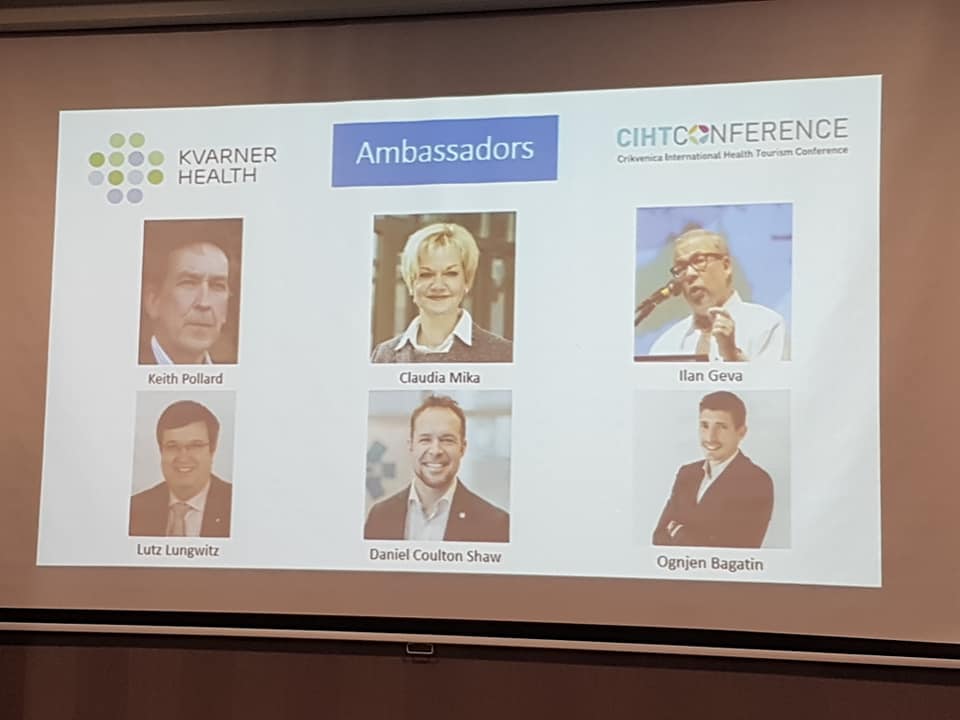
The high-quality nature of the international expertise was perhaps best illustrated after the introductions, as the Kvarner Health Cluster made a presentation to its six ambassadors in recognition of their work.

Keith Pollard, Editor in Chief of International Medical Travel Journal (IMTJ), Claudia Mika, founder and CEO of Temos International in Germany, Lutz Lungwitz, President of the German Medical Wellness Association, Daniel Coulton Shaw, co-founder of Global Clinic Ranking and Smile Clinic Slovakia, Ognjen Bagatin, CEO of Bagatin Clinic in Zagreb, and Ilan Geva. Geva was put to the back of the list for the presentations, as he was given an additional gift - a Luka Modric football shirt, which he had jokingly requested previously. A nice touch.
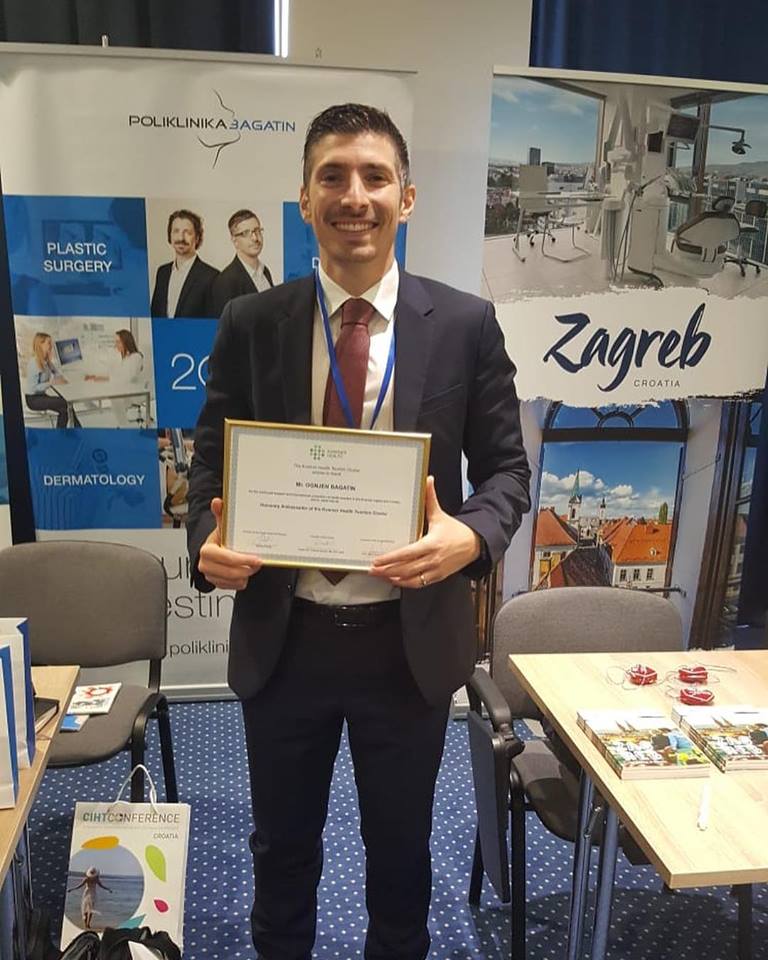
It was particularly pleasing seeing young Bagatin get recognised for his efforts. There is no more avid - or effective - promoter of medical tourism in Croatia today, and his tireless travelling of the globe and local lobbying to move the story forward has placed his as the key person in developing the Croatian medical tourism story.
With such a star-studded lineup, I was expecting some great information and presentations, but I was not quite prepared for what followed. Malaysia has been named as the best in medical tourism travel for several years in a row, and Sherene Azli, CEO of the Malaysian Healthcare Travel Council was on her second visit to Croatia to explain how they did it. It was perhaps the most impressive presentation I have heard in my time in Croatia - of how to make an industry go from nothing to the world's best in just a few short years. And I was not the only one who was absolutely stunned at the Malaysian approach and cohesion of all the major stakeholders; I overheard one of Croatia's most successful clinics (I will not mention which) approach Sherene after the presentation, gushing with praise at the achievement, and lamenting the fact that such togetherness could be achieved elsewhere but not in Croatia.
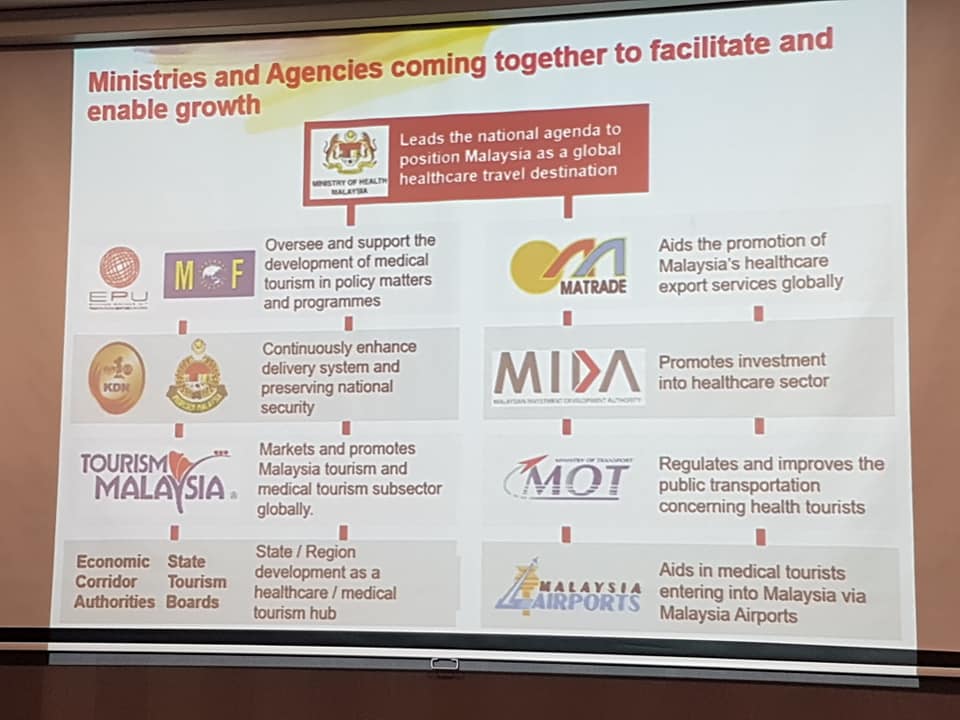
Sherene kindly gave TCN an interview in the November Crikvenica sunshine, which I will publish in full in the coming days. It is quite a story, but I leave you for the moment with two things - the slide above listing all the major stakeholders who are all working as one, with Sherene coordinating all. About 90% of her job is managing the stakeholders, but 100% unity of the relevant institutions from marketing to arrival at the airport. A dedicated medical tourism waiting lounge is the first contact, which includes a transfer to the clinic. And the second teaser for now - take a tour of the Malaysian medical tourism experience in the official video below.
And then perhaps the nicest moment of the morning session of the first day of this Kvarner health conference - a thank you to Croatia from Sherene not only for some thoughtful hospitality she had never encountered in 60 other countries she has visited, but hospitality which showed her how Malaysia could improve its service and hospitality thanks to her experience in Croatia.

I am probably the only Muslim in the room, she said, as she showed us a slide of two tiny details that made her feel truly welcome and that had never happened anywhere else. On the left, prayer mat, qibla and Koran which she found in her room, on the right Halal breakfast options.
"I have only come across this halal option once before on my travels," she said. "At the Zagreb Hilton last year."
Well done Croatia. Those little details make a big difference.

Sherene was not the only fascinating speaker. The first morning session consisted of the following:
Is Kvarner health a tourism destination following the EU scenarios for health tourism development? Milena Persic, Full Professor at the Faculty of Tourism and Hospitality Management in Croatia.
Developing a medical travel strategy for a hospital or clinic. Keith Pollard of IMTJ. Keith, pictured above right, is a fellow Brit and also kindly gave an interview on the potential of Croatian medical tourism, one which I will also publish shortly.
How to use TRUST in building the brand of your country, hospital, and people. Ilan Geva from the United States.
Understanding Chinese perceptions towards Croatian medical tourism: a Fishbein model based on competitive analysis. Christine A. Lai, Professor at the State University of New York Buffalo State, USA.
University Eye Hospital Svjetlost - from a single practitioner office to an international chain of eye care centers. Ivan Gabric from Eye Hosptial Svjetlost in Croatia.
A global patient stream turning online - the key ingredients to grow your patient base. Martina Viduka, Clinic Relationship Manager of Qunomedical, Germany.
France Surgery - the key to success. Carine Briat-Hilaire, CEO and Co-Founder of France SURGERY, France.
Development of international cooperation in the Lublin Medicine Cluster in the field of scientific research and innovation in medicine, health, and education. Dariusz Matosiuk, Vice-Rector for science at the Medical University of Lublin, Poland.
Quite an international field, with some truly fascinating topics, even for a non-medical person such as myself.
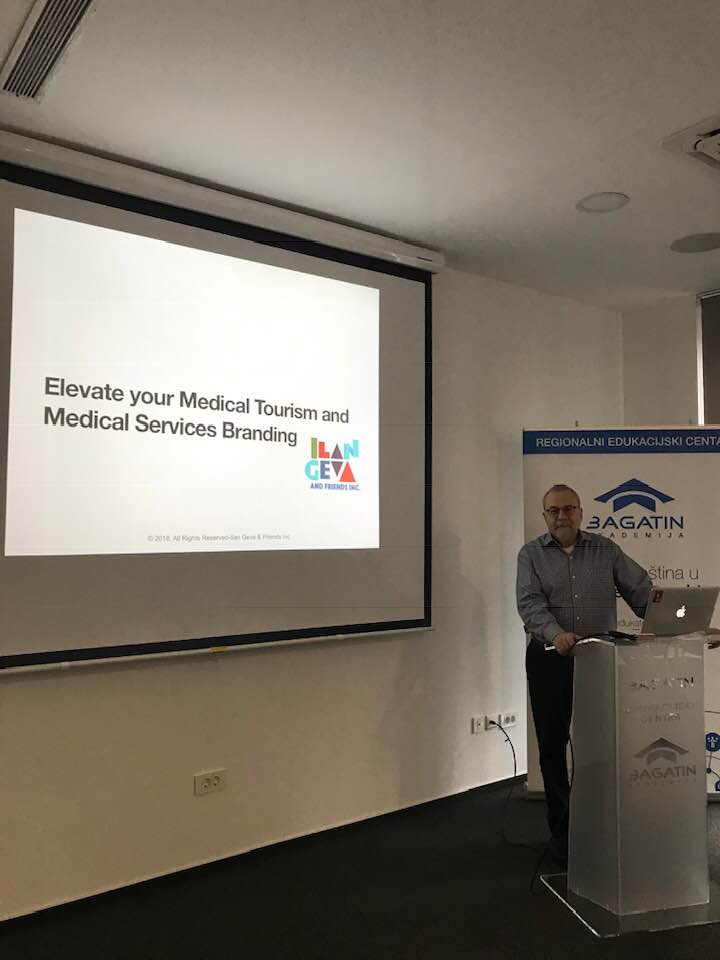
(Ilan Geva at the Bagatin Clinic Croatian branding workshop in Zagreb earlier this week)
"Tell us a little about the branding of Croatian medical tourism from an industry perspective, and how can it be improved," I asked the first panel from the audience.
"Croatia doesn't have a medical tourism brand. Period. I told you I am direct, but that is the truth. It has GREAT potential. It has some brilliant businesses such as Bagatin, which are doing incredible things, but private businesses cannot brand a country. The politicians need to provide the legislative framework for medical tourism to operate effectively. Then they need to set a budget. Then they need to get the hell out of the way and let the professionals deliver."
It was a theme echoed by Svjetlost's Ivan Grabic, whose frustration with the lack of national branding and promotion was not hard to detect. I asked him what he would do with a blank paper and pen and a mandate to deliver medical tourism in Croatia. He was extremely candid - and smart. Bring the clinics together to agree what they can offer. Then go to the government and involve the official stakeholders, for only the State can create a country brand, not a private company. Then agree a budget, which is where the fun begins. Gabric said that for every euro spent on marketing his eye clinic, he knows he will get 15-20 euro of business. Creating a Croatian medical tourism brand will not only take time to be successful (several years for France Surgery and the Malaysian Healthcare Travel Council), and so it will be seen as a shot in the dark with no immediate results. And that's where things break down with official cooperation and funding.
So the current state of the Croatian medical tourism industry, which has the potential to bring in BILLIONS to Croatia is this (from this Englishman's perspective):
1. The biggest brand for health care in Croatia does not mention Croatia - it is Kvarner health.
2. The biggest advocate of Croatian medical tourism is one private clinic in Zagreb (and soon in Split) - Bagatin.
3. Some of the best eye surgery (and probably the best for quality and price) in Europe is to be found in Zagreb and 6 other locations in the former Yugoslavia - Svjetlost.
4. There is a hospital in Zabok which is the exclusive partner of the world's best hospital, Mayo Clinic, on a new healthcare initiative - the OneOme RightMed pharmacogenetic test - which can save hundreds of thousands of lives a year and save hundreds of billions of dollars.
5. ALL the international medical tourism experts agree on the potential of health tourism in Croatia. And ALL the experts say the next step is for all the stakeholders to work together to make that happen.

Here is Sherene's slide on how Malaysia did it again - a reminder of how Malaysia did it.
In the front row at today's Kvarner Health cluster conference were senior representatives of the Ministry of Health, the Ministry of Tourism and the Croatian National Tourist Board - all key players.
Can Croatia do a Malaysia? Over to you, Croatia.
As for me, now I REALLY want to go and visit Malaysia... Learn more about the Malaysia Healthcare Medical Council here.
****
To follow the latest news regarding the Kvarner health cluster and medical tourism in Croatia in general, follow the TCN medical tourism tag.
For more on Kvarner health and the Crikvenica International Health Tourism Conference, click here.
Ilan Geva Helping Croatian Health Tourism: Bagatin Workshop, Crikvenica Conference
October 29, 2018 - The Croatian medical tourism story continues with one of the leading global health travel experts Ilan Geva visiting Zagreb and Crikvenica next week.
I am quite new to the Croatian medical tourism scene, despite having covered tourism in Croatia for a number of years, and the more I investigate, the more excited about the possibilities. I will confess that it was a surprise to find the level of excellence on offer in a number of medical fields when I did my initial research for Health Tourism is Coming Home: Why Zagreb is the Next Health Tourism Hot Spot.
The one big difference between health tourism and mainstream tourism in Croatia is that the majority of players are in the private sector, and as such, tend to be more driven and progressive. After just a few months of watching the Croatian health tourism sector from distance, I am a little breathless after years of the slow pace of progress of tourism in Croatia.
Next week is another big week for the industry, with the Crikvenica International Health Conference the main event, which will have several keynote speakers, including medical travel expert, Ilan Geva, who will be combining his trip with an invitation-only workshop in Zagreb hosted by one of the pioneers of medical tourism in Croatia, Bagatin Clinic.
Ilan Geva is a global Medical Travel expert, specializing in branding and consumer behavior who provides consulting, teaching, training and help in practicing and implementing all brand touchpoints. He develops and creates Brand platforms including brand vision, brand strategy & brand personality, using strategic business solutions for multinational, national and regional entities. His work has won over 100 industry awards around the world. Ilan assisted health ministries, medical tourism councils, destinations, hospitals clinics and doctors. Ilan Geva is a global Medical Travel expert, specializing in branding and consumer behavior who provides consulting, teaching, training and help in practicing and implementing all brand touchpoints. He develops and creates Brand platforms including brand vision, brand strategy & brand personality, using strategic business solutions for multinational, national and regional entities. His work has won over 100 industry awards around the world. Ilan assisted health ministries, medical tourism councils, destinations, hospitals clinics and doctors.
After his workshop at Bagatin Clinic in Zagreb, Ilan Geva will be heading to the Crikvenica on the Adriatic coast as a keynote speaker at the Crikvenica International Health Tourism Conference on November 8-9, with a presentation title: “How to use TRUST in building the brand of your country, hospital, and people” For more information on Ilan Geva and the rest of the conference in Crikvenica, visit the official conference website.
To follow the latest in the Croatian medical tourism story, follow the dedicated TCN medical tourism channel.
The Mediterranean as It Once Was: Crikvenica in 1965 (VIDEO)
October 9, 2018 - Continuing our look at the Mediterranean as it once was, a trip south of Rijeka more than 50 years ago.
A Look At Population Growth During Tourist Season
The real figures are even higher if non-commercial accommodation facilities are accounted for, and this year there are nearly half a million beds in 102,000 such facilities.
Almost Three Million Overnight Stays Recorded - Croatia's Leading Destinations
The long weekend bears its tourism fruit!
Crikvenica to Introduce Vignettes for Some Buses
Gone are the days of dangerous drop-offs in Crikvenica. Buses will be able to enter the city with a vignette, after which they will be provided with a parking space where passengers can disembark and board.




